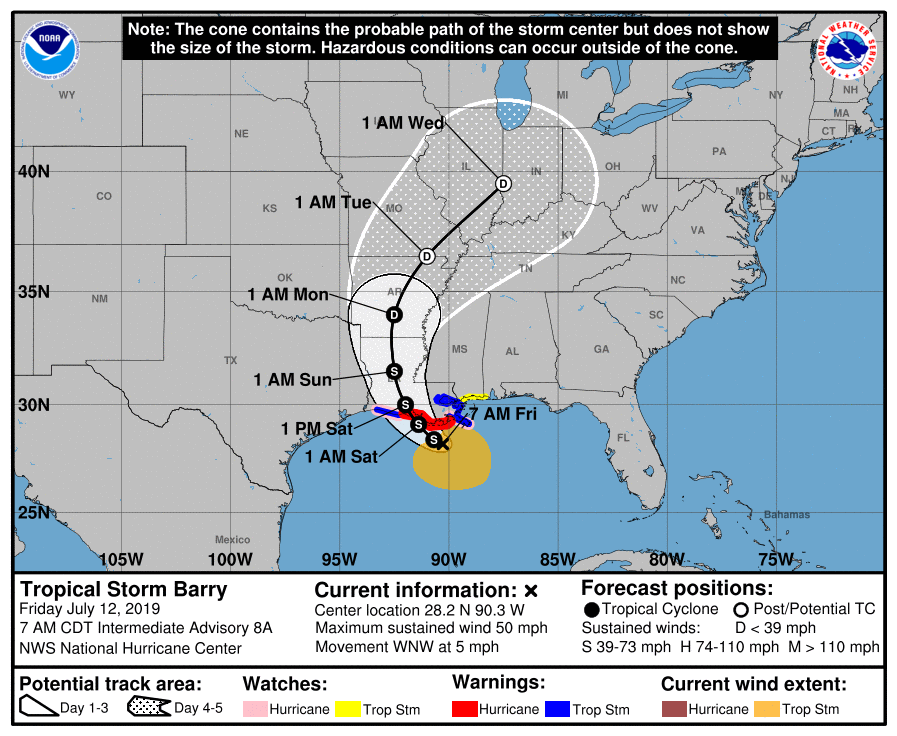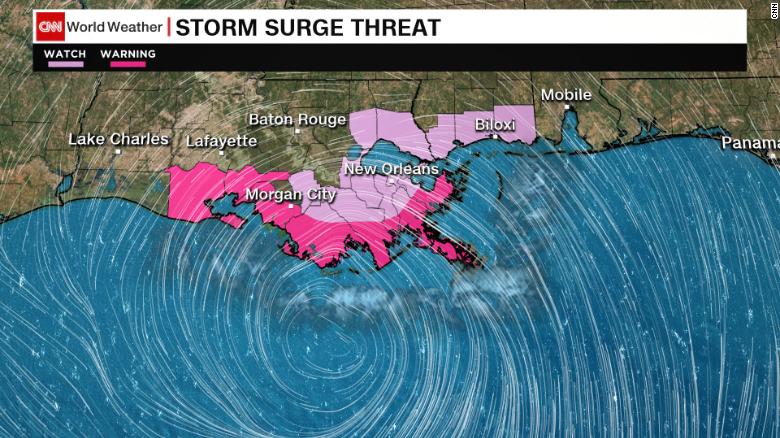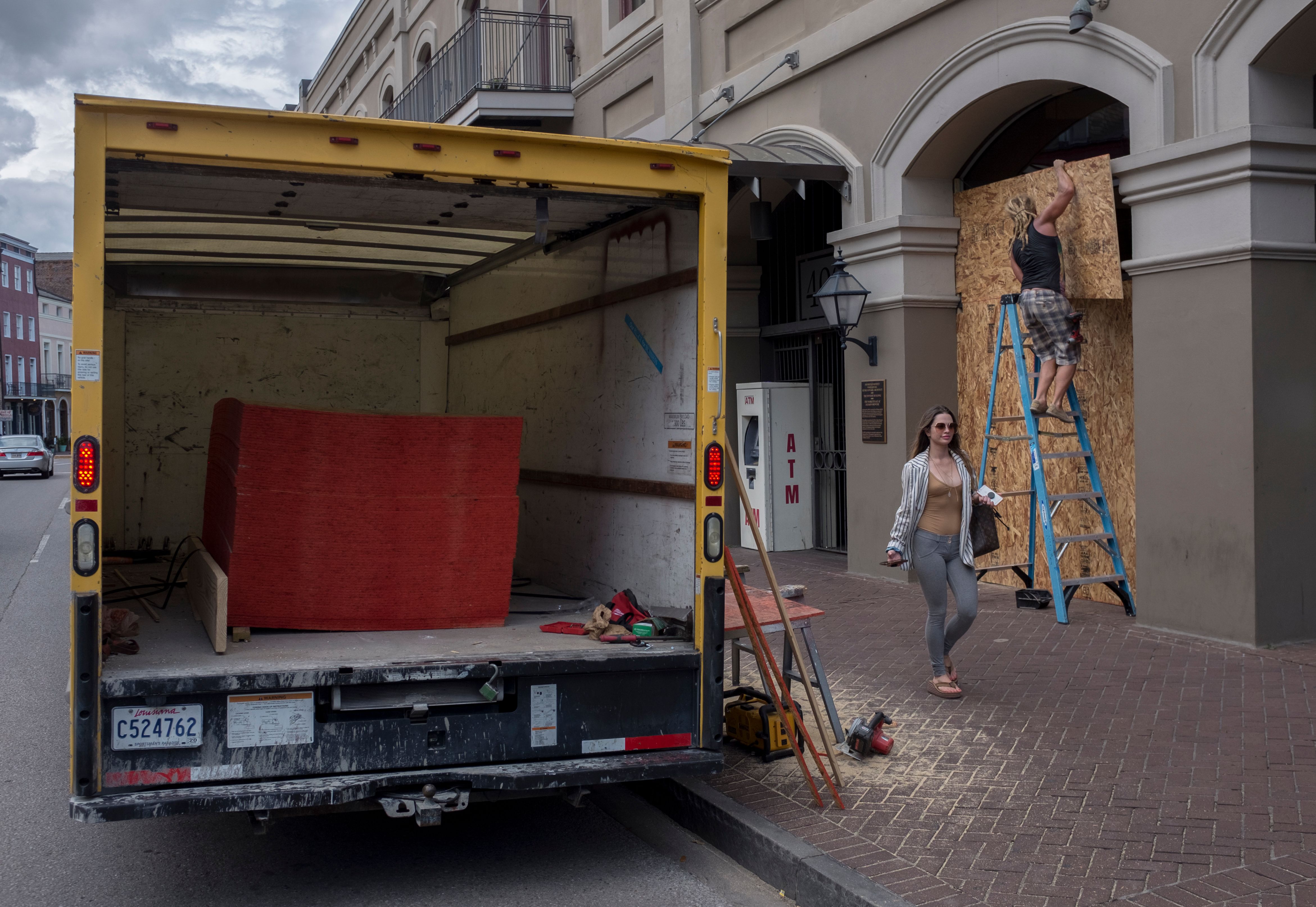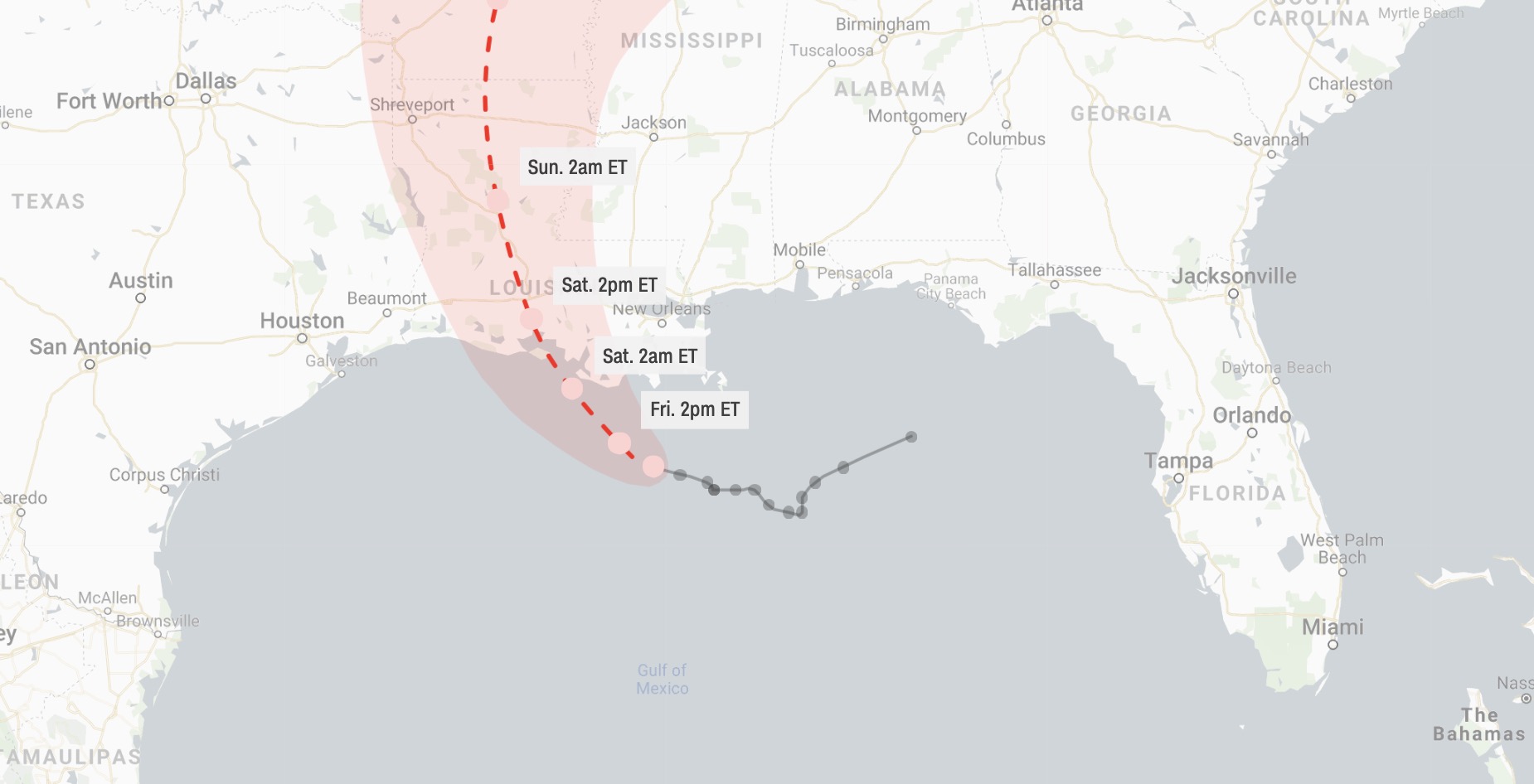Louisiana has withstood devastating hurricanes before, but authorities are urging residents not to underestimate the danger and destruction Tropical Storm Barry threatens as it gets closer to the coast Friday.
"Look, there are three ways that Louisiana floods: storm surge, high rivers, and rain. We're going to have all three," Gov. John Bel Edwards said.
Barry is moving through the Gulf of Mexico and is the first tropical storm to threaten the United States this year. While there is a chance it could reach hurricane level, the real threat the storm poses is rain — which could quickly turn into unprecedented flooding.
It's moving slowly through the warm waters of the Gulf of Mexico, giving it time to strengthen, and it's expected to release large amounts of rain on the roughly 10 million people in its path.
The Mississippi River, which is usually at 6 to 8 feet around New Orleans this time of year, is at 16 feet after a year of record flooding. And 10-15 more inches of rain are on the way, CNN meteorologist Derek Van Dam said.







